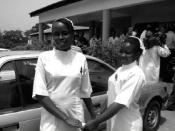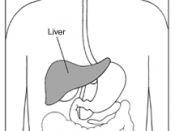Running head: HEALTHCARE PROFESSIONAL LOAN REPAYMENT PROGRAM � PAGE \* MERGEFORMAT �1� HEALTHCARE PROFESSIONAL LOAN REPAYMENT PROGRAM � PAGE \* MERGEFORMAT �9�
Healthcare Professional Loan Repayment Program in Relation to Nursing
Gene A. Duplantier
Saint Xavier University
Health Care Systems and Financing
Nurs 517
Juli Daniels RN, Ph.D.
February 16, 2010
�
�
Healthcare Professional Loan Repayment Program in Relation to Nursing
Records show that in every nation, nowadays, experiences shortage with regards to medical staffs which cause inconvenience with medical services. Because health care is one of the several professions basic to the culture of any advanced community, it is necessary first to consider the nature of the professions in general, then to identify its relationships with the other professions, and most of all, to ensure each professionals wrights, especially for financial inducement such as support-for-service program (SFSP). This strategy is also used to ensure enough professionals are the field, for SFSP encourages each professional not to leave their positions.
There are five types: scholarships, service-option loans, loan repayment, direct financial incentives, and residency support programs. According to Alaska's Health Planning & Systems Development, Department of Health & Human Services, every SFSP's aim is "to improve healthcare staffing in shortage areas" and it has been proved that the repayment program is one of the most effective of the several support-for-service strategies-in terms of both recruitment and retention (2007).
One major factor leading to the shortage in nursing is the baby boomers phenomenon, or you can see it is one of the leading factors. "Approximately one third of the nursing workforce is over 50 years of age and the average age of full time nursing faculty is 49 years. A study published in the July 2000, in an issue of Journal of the American Medical Association (JAMA) predicts...


